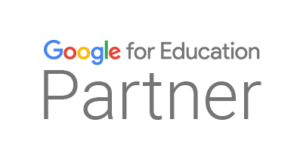When the Air Quality Index (AQI) meter turns from yellow to a deep ominous red, the immediate concern shifts to health – closing windows, donning masks, and limiting outdoor exposure. But for students, a red AQI day triggers a crucial question for education systems: How do we keep learning going safely?
The answer is clear: informed pedagogical structures that take into account the ongoing environmental crisis, now widely known as hybrid learning. Poor AQI, once a sporadic health warning, has become a formidable, non-negotiable factor in educational policy, pushing institutions toward a flexible, future-proof model.
The Hidden Cost of Unhealthy Air on Education
The impact of poor AQI driven by pollutants like fine particulate matter and smog extends far beyond mere physical discomfort. It directly compromises the learning environment.
- Health and Absenteeism: Exposure to high levels of pollution exacerbates conditions like asthma, a leading cause of school absences. Students become ill more frequently, leading to missed days and disrupted academic progress.
- Cognitive Impairment: Research has shown a direct link between ambient air pollution and lower academic achievement. Pollutants can cause drowsiness, headaches, and a significant drop in concentration and cognitive function, making complex tasks like problem-solving and information processing more challenging.
- Safety Imperative: On days with a “Severe” or “Hazardous” AQI (often above 300), the risk to all students and staff’s health is too high to ignore. Continuing in-person classes becomes an ethical and legal liability.
Hybrid Learning: The Adaptive Solution
The lessons learned during global health crises, coupled with the recurring reality of environmental threats like extreme heat and wildfire smoke, have made a compelling case for the Air Quality Mandate: a non-negotiable shift to hybrid learning whenever air quality breaches a safety threshold.
Hybrid learning provides a necessary pivot:
- Safety First: When AQI hits the “Red” or “Severe” category (e.g., in regions like Delhi-NCR, where this has become a recurring challenge), physical attendance is immediately suspended. Students transition seamlessly to online lessons from the relative safety of their homes.
- Continuity of Instruction: Unlike full closures, hybrid models ensure that the curriculum keeps moving. Teachers can conduct live virtual classes, distribute digital assignments, and maintain one-on-one student interaction, minimizing the educational setback.
- Operational Flexibility and Teacher Readiness: The hybrid model ensures that school operations remain uninterrupted. Trained teachers who equipped for both in-person and digital delivery, can pivot instantly without the scramble and administrative chaos of an unexpected shutdown, allowing the school to maintain a consistent academic calendar and meet regulatory requirements for instructional hours.
Beyond the Mandate: Building Resilient Schools
The need for a hybrid fallback highlights a larger opportunity: to build more resilient, future-ready schools. The focus shouldn’t just be on what happens outside the classroom, but also what happens inside.
1. Infrastructure Upgrades
For days when the AQI is “Moderate” or “Unhealthy for Sensitive Groups” (Orange), improving indoor air quality is vital.
- Advanced HVAC Systems: Upgrading to high-efficiency MERV filters can significantly reduce indoor particulate matter, creating a safe environment even when the air outside is compromised.
- Air Purifiers: Strategically placing portable air purifiers in classrooms offers a cost-effective, immediate solution to scrub the air of fine pollutants.
2. Clear Communication Protocols
Schools need clear, decisive, and pre-announced protocols for shifting modes. This includes:
- Parental Communication: Fast, multi-channel alerts (SMS, email, app notifications) are essential to inform families of the change by a set of time each day.
The era of expecting education to proceed as normal, regardless of environmental factors, is over. The Air Quality Mandate is more than an emergency measure; it’s a structural transformation. It forces educators, administrators, and policymakers to prioritize student well-being by creating flexible, adaptive learning models. Hybrid learning is no longer a temporary fix for a crisis; it is the essential, enduring framework for an environmentally volatile future.
The Future is Adaptive
The era of expecting education to proceed as normal, regardless of environmental factors, is over. The Air Quality Mandate is more than an emergency measure; it’s a structural transformation. It forces educators, administrators, and policymakers to prioritize student well-being by creating flexible, adaptive learning models.
Hybrid learning is not just a contingency plan; it is the essential, enduring framework for an environmentally volatile future.
Don’t let the air quality dictate your students’ future. Future-proof your institution today.
Click here to schedule a free consultation and see Netoyed for Education in action!




 1st Floor, H-31, Sector 63,
1st Floor, H-31, Sector 63,